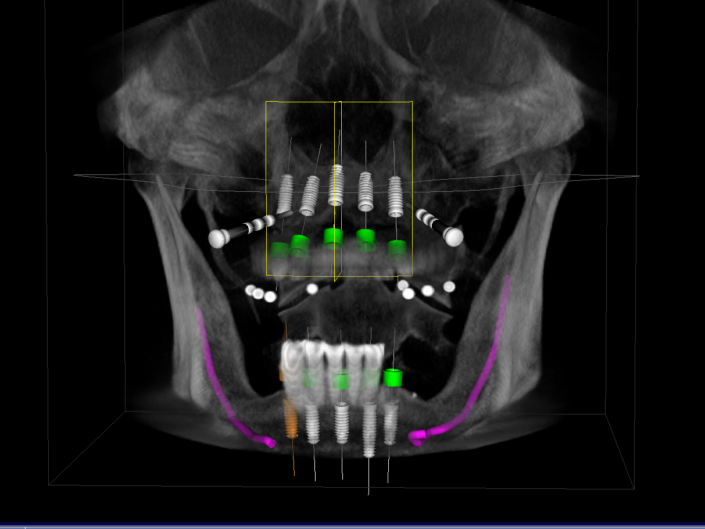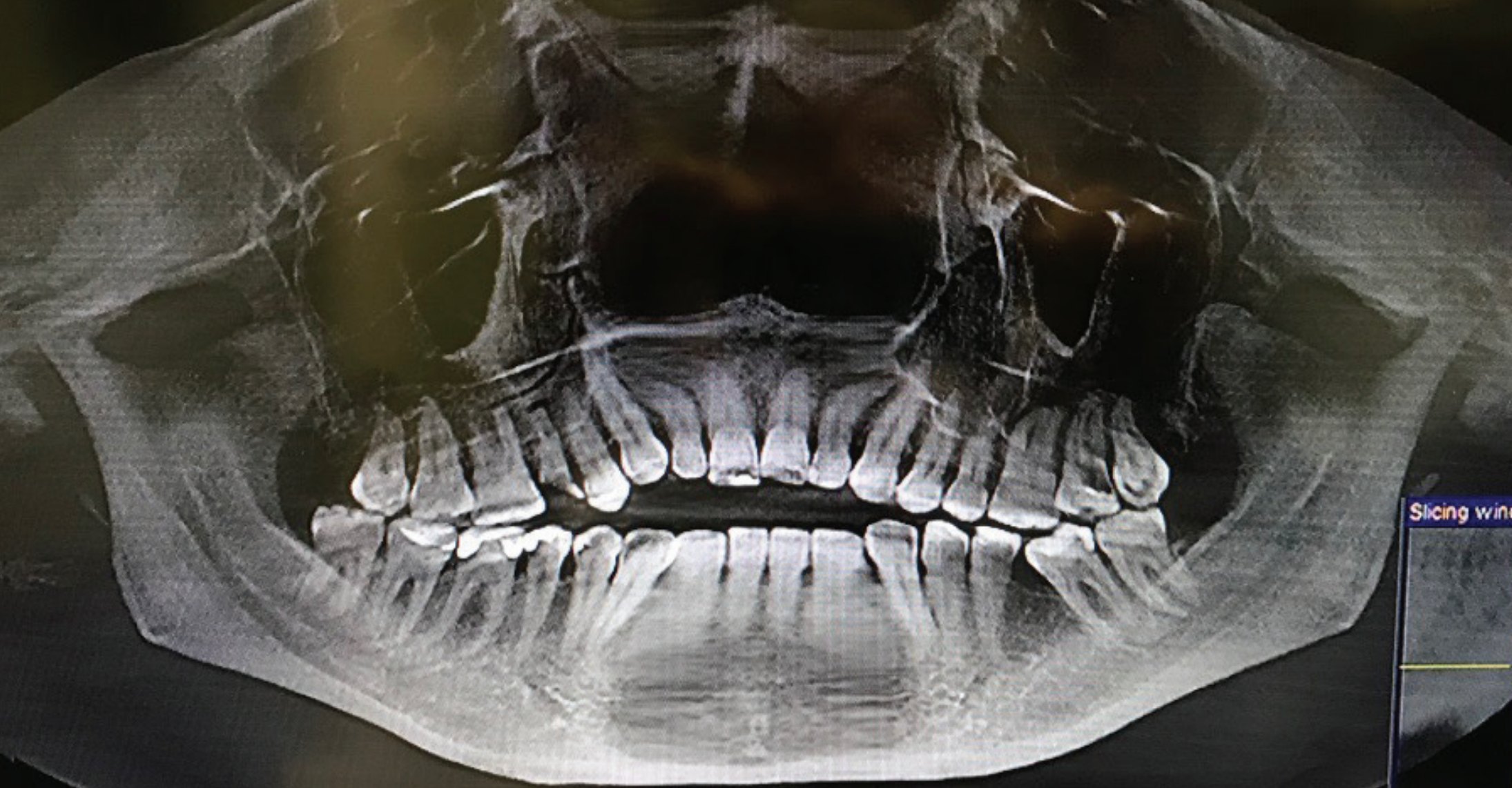
Why you should use a CBCT
Cone beam CT technology is really starting to increase in its utilization within our profession, and it’s been steadily increasing over the last decade as the ability to have a CT scan unit in our office is becoming more affordable and more predictable. One of the more common question we get is when should we be utilizing a CT scan?
Visualizing implant placement
 One of the most utilized reasons to have a CT scan is for implant planning, because the standard of care now is moving towards guided surgery for placing our implant surgically. Nothing is better at helping us to plan the placement of an implant than to be able to visualize the bone three-dimensionally. If we can visualize that bone three-dimensionally, that gives us the ability to make sure we’re putting that implant in the best position, but it also helps us to three-dimensionally visualize where is the tooth going to go over top of that implant.
One of the most utilized reasons to have a CT scan is for implant planning, because the standard of care now is moving towards guided surgery for placing our implant surgically. Nothing is better at helping us to plan the placement of an implant than to be able to visualize the bone three-dimensionally. If we can visualize that bone three-dimensionally, that gives us the ability to make sure we’re putting that implant in the best position, but it also helps us to three-dimensionally visualize where is the tooth going to go over top of that implant.
Implant dentistry is so much more predictable when we have the end point in mind and utilizing that to guide the placement of the implant, but also making sure that we’re getting the implant put into a really good bone. This is a really common use for a CT scan now, but as things have evolved and changed in a complete care setting in dentistry, there are other uses for a CT scan which are very helpful.
Controlling bacteria in the mouth
One of the most common ones that I utilize in my office is before we get into doing larger restorative treatment plans. Our protocol now is to take a cone beam CT scan of that patient because that gives us the ability to three-dimensionally look all the way around the tooth 360 degrees, look at the apex. Specifically, one of the most common things that helps me within my office is making sure that I’m getting control of bacteria. When we break down our treatment sequencing into our three different phases, phase one is making sure we’re in control of bacteria. I will tell you, I very commonly will find patients that have abscesses associated with teeth or with prior-root-canal-treated teeth that are completely asymptomatic.
One of the limitations of two-dimensional radiographs like PAs is that you’re losing a third dimension. I am still so surprised sometimes how we will look at a three-dimensional scan and find things that we just couldn’t see on a periapical radiograph, because when you’re talking about something that’s three-dimensional. If you can only visualize two dimensions, you’re really missing 30% of the equation. So that has become a standard of care in my practice.
Evaluating airway problems
 Now, one of the other great things to utilize our cone beam CT for as well is now visualizing the joints and also looking at the airway. Sleep-disordered breathing, sleep apnea related items or complications are becoming very common. It is becoming a very important part of diagnosis within our profession. The cone beam CT technology provides us a great opportunity to be able to visualize a patient’s airway. We can now start to look for skeletal abnormalities and move patients towards definitive treatment for any kind of sleep-disordered issues that they are having.
Now, one of the other great things to utilize our cone beam CT for as well is now visualizing the joints and also looking at the airway. Sleep-disordered breathing, sleep apnea related items or complications are becoming very common. It is becoming a very important part of diagnosis within our profession. The cone beam CT technology provides us a great opportunity to be able to visualize a patient’s airway. We can now start to look for skeletal abnormalities and move patients towards definitive treatment for any kind of sleep-disordered issues that they are having.
Diagnosing the condition of the TMJ
Also, CT scans allow me the opportunity to make a better diagnosis of condition in the temporomandibular joints. Our partners that we have with BeamReaders or with other oral and maxillofacial radiologists are getting so good at interpreting the data that they’re getting from a cone beam CT, that we can very reliably start to make a diagnosis of what’s going on at the joint level as well. It doesn’t have to be as expensive as sending the patient out for a soft tissue imaging through an MRI.
CT scans make dentistry more predictable
The use of cone beam technology is becoming more and more widespread within our industry, which is wonderful. It is a very safe technology, especially if it is utilized correctly. It is giving us the opportunity to make better diagnosis for our patients before we start treatment and also makes our treatment much more predictable. It is going to get more popular, and it’s going to become more important, if you’re a practicing clinician, to start to understand where this three-dimensional technology will fit into your practice.
To learn more about the complete digital workflow, register for Digital Solutions for Complete Dentistry.









Leave a Reply
Want to join the discussion?Feel free to contribute!